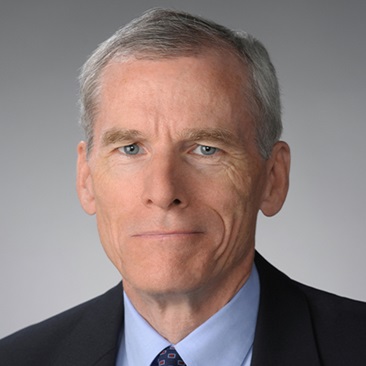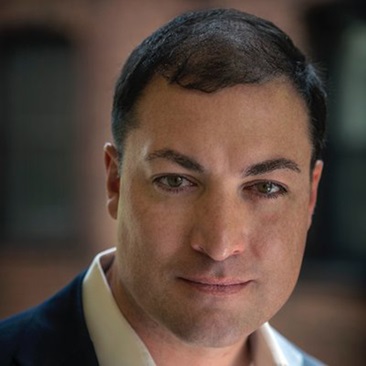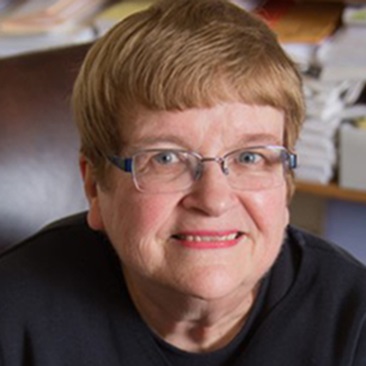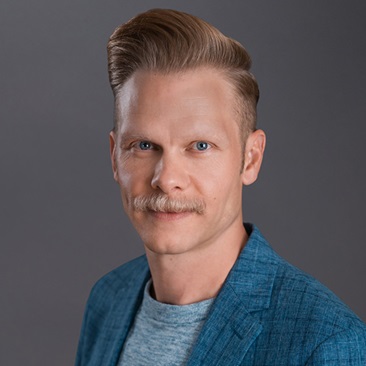What Makes Them Tick?
June 1, 2013
All eyes have been on North Korea in recent months, as supreme leader Kim Jong Un challenges the international community with increasingly bombastic rhetoric, threatening South Korea, Japan, and the United States with the use of nuclear missiles. The North Korean government is highly isolated, and little is known about its young new leader. So analysts are left to speculate.
Is Kim employing threats to enhance his position in negotiations with South Korea, Japan, China, and the United States, as seemed to be his father's style? Is he merely attempting to consolidate his hold on power and demonstrate his bold and forceful leadership? Is there any chance he is serious about any of his threats?
Or, possibly, given his inexperience, he may not speak for himself. His pronouncements may actually be directives from four people his father left him as senior advisors. Perhaps they are the real decision makers.
"At issue is: Is this really him, or is this the result of group dynamics?" asks political psychologist Margaret "Peg" Hermann. "We don't know the answer yet."
Hermann is one of the world's leading authorities on the psychology of political leadership. Moreover, she has developed an empirical method for assessing the leadership styles of political elites that is employed by analysts around the globe, providing a way to anticipate how particular leaders are likely to lead and, in turn, what they are likely to urge their governments to do.
While it's true that leaders react to the constraints in their political environments, they are also influenced by their own political beliefs and the degree to which they respect others' points of view. Hermann notes how sometimes leaders in the same political system exhibit different styles - Margaret Thatcher versus David Cameron in Britain, for example, or Deng Xiaoping versus Hu Jintao in China. "In each case, one pushed an agenda while the other sought input from others in moving forward," she says.
Consider that while Saddam Hussein was aggressively using military force to take over Kuwait, thus sparking the first Gulf war, Syrian leader Hafez al-Assad was subtly consolidating his power over Lebanon. "It took the U.S. government a decade to challenge this behavior," says Hermann, who is Gerald B. and Daphna Cramer Professor of Global Affairs. "Hussein and Assad had different leadership styles even though they governed in similar types of authoritarian political systems and had similar levels of power and authority."
Trained as a psychologist, Hermann has helped pioneer the field of political psychology and its study of leadership behavior and decision making. Her work is used by researchers in the academy, think tanks, and government, and she has produced dozens of PhD and professional students versed in the subtleties of political leadership. She also makes presentations to a wide range of organizations in the defense and security sectors; her research has an increasingly real-world role via the training she gives to practitioners in such fields.
She will soon undertake a leadership profile of Kim Jong Un, having collected nearly enough material to analyze. Once she completes Kim's profile, Hermann will compare it with those of 114 other Pacific Rim leaders she's studied, which helps to determine if he is truly as erratic as he seems. "I look at which governments are more crisis-prone based on what their prime ministers or presidents are like, noting which leaders work within the system and which will challenge the constraints they face and take more extreme kinds of action," she says.
Assessment at a Distance
Hermann got hooked on political leadership as a graduate student at Northwestern University. For a summer project, she'd been tasked with simulating the outbreak of World War I, employing a computer model of international relations and using students to role-play the parts of political leaders. She took a novel approach.
She read all the biographical and autobiographical material she could find on the relevant political leaders and used the California Psychological Inventory to create a psychological profile for each leader. She also asked students who had volunteered for the role-playing simulation to take this personality test. She then assigned each student to play the leader he or she most closely matched.
The students believed they were taking part in a fictitious exercise. The provided background materials had been masked to obscure which actual people and events they represented. That way, the outcomes could not be influenced by students' knowledge of real events leading up to the crisis in 1914.
"We were interested in whether or not war would break out," says Hermann. Startlingly, where there was the closest psychological match between the students and leaders they were simulating, war did begin, at the same juncture it broke out during the actual events. By contrast, in cases where the matches were not as close, the students organized an international conference and settled their dispute. The exercise suggested that what the leaders were like played a role in what their governments did.
"I have been trying to understand how leaders can shape policy ever since," Hermann says.
Of course, you can't just call the president of Iran and ask him to take a personality inventory. So Hermann developed an "assessment-at-a-distance tool" that she uses to study world leaders using their interviews, speeches, and writings. As Hermann says, "only movie stars, rock groups, and professional athletes leave more traces of their behavior in the public arena than politicians.
"By content-analyzing what they say and how they say it, I can assess their leadership style and begin to understand the kinds of advisors they'll use, the way they'll structure their government, and the type of impact they are likely to have on policy," says Hermann.
For many years, Hermann did the analysis manually, reading transcripts to look for evidence of seven traits deemed important by historians, biographers, journalists, psychologists, and political scientists - traits influencing not only what leaders themselves did, but the behavior of the organizations they led. The traits include the leaders' belief in their ability to control what happens; their need for power; their conceptual complexity (viewing the world as black-and-white versus shades of gray); their self-confidence; the degree to which they focus on problem solving versus relationship building; their distrust of others; and how strongly they identify with a group such as party, government, religion, or country. Manually coding this analysis was tedious. Nonetheless, by the late 1990s Hermann had developed profiles of 200 post-World War II leaders. Then two developments revolutionized her process.
“By content-analyzing what they say and how they say it, I can assess their leadership style and begin to understand the kinds of advisors they'll use, the way they'll structure their government, and the type of impact they are likely to have on policy.”
Peg Hermann
Director, Moynihan Institute of Global Affairs and Gerald B. and Daphna Cramer Professor of Global Affairs
The first was the Internet, which provided easier access to materials on political leaders. ("Now I never have to leave my desk," Hermann jokes). The second was computer software. While Hermann was a professor at Ohio State University, a doctoral student approached her with the idea of automating the coding. "He had a science background and thought he could build a business out of this," she recalls.
After completing a PhD, the student, Michael Young, developed the platform, Profiler Plus, which contains the Leadership Trait Analysis (LTA) software Hermann uses, and started a company, Social Science Automation. LTA software accommodates larger volumes of data, creates more reliable coding, and controls for coder bias. It allows for depths of analysis almost impossible to do manually - such as comparing an individual's traits over time, comparing responses by context (e.g., crisis versus non-crisis, by issue, or by region). Hermann and her students have collected data on more than 700 world leaders since 1999.
By profiling a large number of leaders in a region, culture, or country, Hermann is able to assess a leader in comparison with others from his culture or country. "Consider that the 31 Iranian leaders I've studied are twice as likely as leaders elsewhere to see things as gray instead of black-and-white," she gives as an example. "Their world is conditional and contextual and they are unlikely to say 'yes or no' to developing a nuclear weapon, which is what we want."
The LTA software can analyze many types of leaders, not just heads of state. "The applications of this are practically limitless," says Christiane Pagé, one of Hermann's current doctoral students. She and Hermann have assessed the leadership of U.S. civil servants and the leaders of transnational NGOs.
Student Followers and Influence
Back in 2006, Pagé was a fledgling doctoral student in interdisciplinary social science program, hired to work as a graduate assistant in the Moynihan Institute's Transnational NGO Initiative, which was using National Science Foundation funding to study leadership and governance in international NGOs such as Oxfam, Save the Children, and Greenpeace. Pagé interviewed organization CEOs, worked on the data analysis, and used Hermann's leadership assessment technique. Hermann mentored Pagé as she developed profiles on 152 NGO leaders - the basis of her upcoming dissertation.
"We wanted to see how the leaders of these big organizations react to the constraints in their political environments - how their personal traits and reactions shape, or don't shape, what they decide to do," explains Pagé. She says most researchers based such assessments on organizational structures. "But when you do that, you're excluding how a person's own leadership style matters in that equation."
Before Maxwell, Pagé was a civil servant at the National Research Council of Canada, working in communications for scientists and engineers. "My interest in leadership and how people translate that to real-world solutions has always been there," she says. "Working with Dr. Hermann, I saw there is a way to measure the impact of people's leadership styles that's completely scientific and statistically sound."
Hanneke Derkson's introduction to Hermann's work was more direct. Having been a political science master's student at the University of Wyoming interested in political leaders and foreign policy, she came to Maxwell specifically to study with Hermann. Today, as Hermann's graduate assistant, Derkson manages the licensing of the Leadership Trait Analysis software to educational users while working on her dissertation, which examines how regime type and political context affect the kind of leaders that get elected. She'll draw from data Hermann and students have collected for more than a decade. "I couldn't do what I'm doing without it," Derkson says of the invaluable resource.
Like most students, Derkson got her introduction to Profiler Plus in Hermann's Political Leadership class at Maxwell, offered to master's and doctoral students. In the course, students choose a world leader to study for the semester. They research and write about the leader's early background - childhood, education, upbringing, etc. Then comes a leadership analysis. The students must collect a quantity of speeches and interviews to run through the software, and then analyze the data in comparison with other leaders from that region to develop a profile. The final assignment asks students to consider a specific event involving that leader and analyze the leader's responses to it.
Azamet Sakiev '11 PhD (PSc) came to Maxwell with an interest in Central Asian regimes but an unclear focus. He found it studying Nursultan Nazarbayev, the president of Kazakhstan, in Hermann's Political Leadership class. While he'd always believed that individual leaders were related to regime type, he says he didn't have the methodological knowledge to understand how or why.
Sakiev expanded his class research into a dissertation topic, comparing the leaders of Kyrgyztan, Kazakhstan, and Uzbekistan. "Here you have three very similar countries - historically, culturally, and religiously - but three different types of political regimes. I wanted to explain that through their leaders," he says.
It was an eye-opening experience. "I had my own expectations and ideas about these leaders, but once I analyzed them through this method they came out as people I didn't expect," says Sakiev, now teaching political science at Northern Georgia University. "You have somebody in your mind, but then the analysis tells you something completely different."
That's not uncommon. Corina Rebegea, a current MPA student from Romania, studied Vaclav Havel, first president of the Czech Republic, in Hermann's Political Leadership class. "He's quite a legendary figure in Eastern Europe - a symbol of the dissident movement in the Communist regime who is also known for his human rights activity," she says. "People from countries like mine were always wondering, Why did we not have a Havel - a person who took the lead in the civil society and helped bring down the Communist regime?"
Rebegea says she expected to find that Havel's leadership profile would change over time - that key events in his lifetime, such as transitioning from an informal leader to the country's president, would have significantly shaped his behavior. Given that he is a philosopher and writer engaged with the artistic community, she also assumed he would be very open to his environment.
When she conducted her analysis, however, she found that Havel wasn't so influenced by events or environment, but had a core set of beliefs he upheld his entire life. Rebegea now views political events in an entirely new way, something she will undoubtedly carry with her into her professional career. "I see how the role of the individual can be so important in shaping policies and in shaping world politics," she says.
For current MPA/IR student Joe Simon, who plans to work in the NGO arena in international development, learning to analyze leaders through content analysis was transformative. "People are stuck in the box of looking at structure," he says. "But if you're not thinking about the type of leaders running those structures then you're missing a huge part of it. You know what to better expect from people once you've analyzed them."
Hermann is motivated both by scholarship and by future practitioners such as Simon. While her doctoral students will conduct research that expands the field, the professional master's students will hold positions of influence in governments and international NGOs. "They are the most likely to actually use this technique in the policy arena," says Hermann, "and as part of their professional positions to assess and work on understanding leaders."
Real-World Application
Leadership analysis has many applications in the policy arena, as Azamet Sakiev learned when he worked with Hermann on a funded summer project, applying her assessment-at-a-distance technique to the study of terrorist leaders. Hermann and Sakiev compared leaders of terrorist organizations who had engaged in violence with those who hadn’t. Why do some turn to violence, others not? Their research, which turned into a publication, was part of a larger project funded by the Department of Homeland Security that compared and contrasted data on al Qaeda and its offshoots.
Indeed, some of Hermann’s most-applied work involves conducting professional development work-shops for up-and-coming leaders and those already in government. “I’m trying to provide theory and techniques that help workshop participants organize the vast amount of information they receive about leaders and leadership. What are the questions to ask and what information is important to gather?” says Hermann, who has served as president of the International Society of Political Psychology and the International Studies Association, and as editor of the journals Political Psychology and the International Studies Review.
Her research on political leaders has led to presentations for a range of organizations and events, including the U.S. Air Force Strategic Deterrence Capabilities in the 21st Century Security Environment Workshop, the Strategic Studies Group of the Chief of Staff of the Army, the Swedish Civil Contingencies Agency, the Herzliya National Security Conference in Israel, the National Institute of Emergency Management of the Chinese Academy of Governance, the Rothermere American Institute of Oxford University, and the Defense Threat Reduction Agency. She has provided written material for the Strategic Multi-Layer Assessment Group in the Department of Defense.
Whether trying to prevent the next terrorist attack or to understand political decision making, leader-ship profiling provides a unique tool to understand what world leaders are like and where they are likely to have an impact on what happens. “Without it,” says Hermann, “we’re all just writing biographies that make comparisons and generalizations difficult.”
This article appeared in the spring 2013 print edition of Maxwell Perspective; © 2013 Maxwell School of Syracuse University.
Related News
Commentary

Apr 16, 2024
Commentary

Apr 15, 2024
Commentary

Apr 13, 2024

